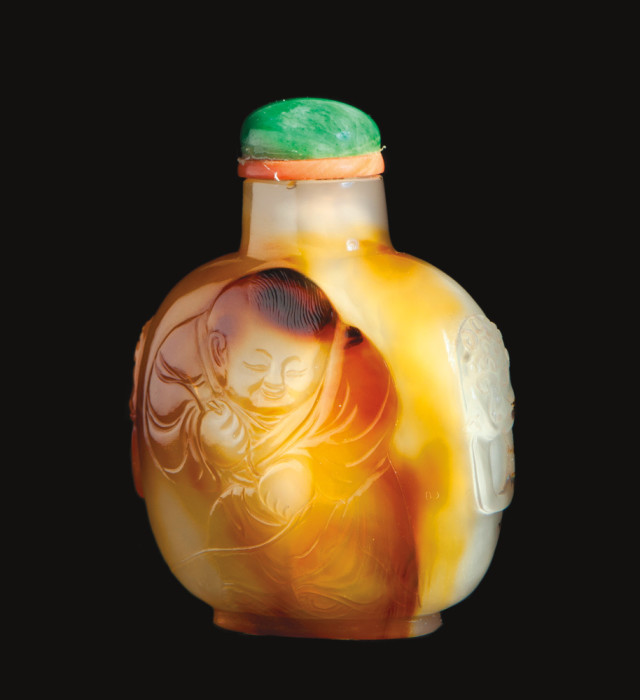Snuff Bottle Aficionados

Image: Courtesy Berthe Ford
Draped in a Chinese-style blouse printed with small and beautifully decorated bottles, Berthe Ford warmly welcomes one well-dressed, gray-haired guest after another to a posh Nines Hotel conference room. She and about 137 people meet up every year someplace on the globe: Hong Kong, London, New York. This year, it’s Portland. She unfolds a program of lectures and seminars and points to one of the topics du jour: “Crowning Glory: The Art of the Snuff-Bottle Stopper.”
For five days and evenings, she and the International Chinese Snuff Bottle Society (ICSBS) will pore over the seemingly endless details of ornate bottles, two or three inches tall, once prized by Chinese aristocrats as tobacco-snorting gear and status symbols. “The more you see,” says Ford, “the more you discern quality.”
Snuff-fancying Chinese lords disappeared around the time the Qing dynasty collapsed in 1910, but for the ICSBS—and the international market—the bottles’ appeal never faded. Prices start around $500; the highest auction prices reach the millions. And the buzz here in the dealers’ room has the excited familiarity of a reunion among far-flung relatives who actually like each other, the bottles replacing children as the recipients of fawning attention. Gilles Lorin, an art dealer from outside Orlando, cradles a specimen with a pattern reminiscent of spiderwebs. “See, this is rock crystal,” Lorin says. “For me, this is quite spectacular.”
The annual meetings in diverse global locales have indeed forged the snuff bottle folk into an extended family. “We all have this common interest,” explains Portland Asian-art consultant Erick Schiess, “but we’ve also traveled the world together.”
One bottle is made of glass, etched with a flower design; another is carved from black and white jade and features a scene with two sheep and a shepherd. “Some bottles are going to look alike,” Lorin says, sweeping his hand over thousands of exquisite vials and scores of people who love them, drawn here from Asia, Europe, and Canada. “But there’s not two of the same bottle.”



